Icebergs and Sea IceThe waters around our Arctic islands are influenced both by icebergs that discharge from the many glaciers that terminate in the sea, and by sea ice that is largely permanent over the Arctic Ocean, but seasonal around the islands. Icebergs can very from just a few metres across (“bergy bits”) to large tabular features, kilometres long. They float a long way south (even as far as Newfoundland) and are a hazard to shipping. Sea ice or pack ice is the thin cover that forms over the ocean and around the coasts of the Arctic. It is the platform from which polar bears hunt, but recent decades have shown considerable thinning and reduction in extent, as a result of global warming. Some projections suggest that the polar pack ice in the Arctic basin will reduce to seasonal ice within half a century. |
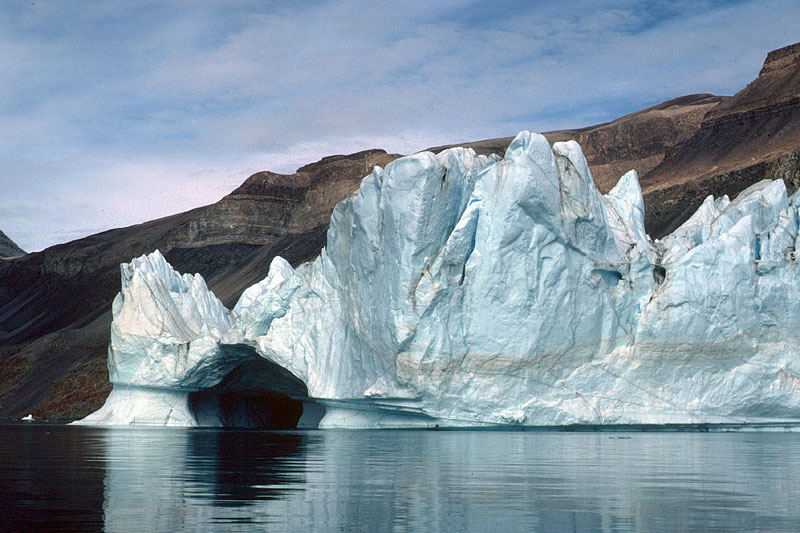 Large icebergs are produced by outlet glaciers of the Greenland Ice Sheet. As they melt, they acquire castellated forms and caverns may develop. Slight tilting of the berg has exposed the former waterline on the left. | 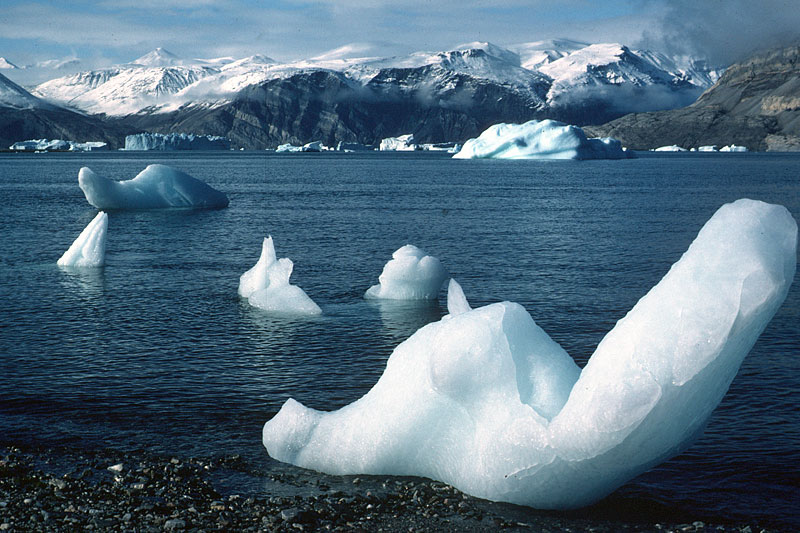 Icebergs in Antarctic Sund, East Greenland, derived from outlet glaciers from the ice sheet over 100 km away. The beached iceberg is typical of the smoothed, beautiful forms like modern sculptures, that are stranded at low tide. | 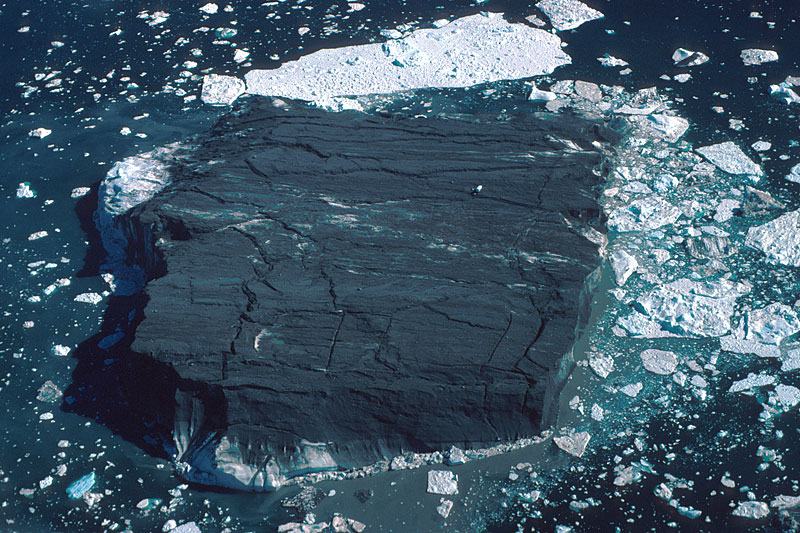 Floating icebergs often disguise the fact that they are major conveyors of debris into the marine environment. This unusual aerial photograph shows an overturned berg, displaying a remnant of the debris-rich sole of Vestfjord Gletscher in East Greenland. | 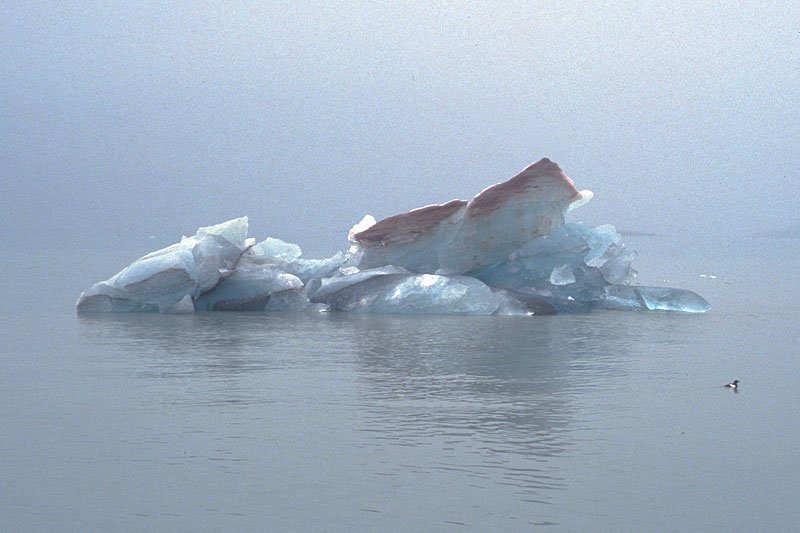 The combination of fog and icebergs is a major hazard to coastal navigation, as here is Kongsjorden, NW Spitsbergen. The guillemot provides a scale for this berg, viewed from a passing rubber boat. |
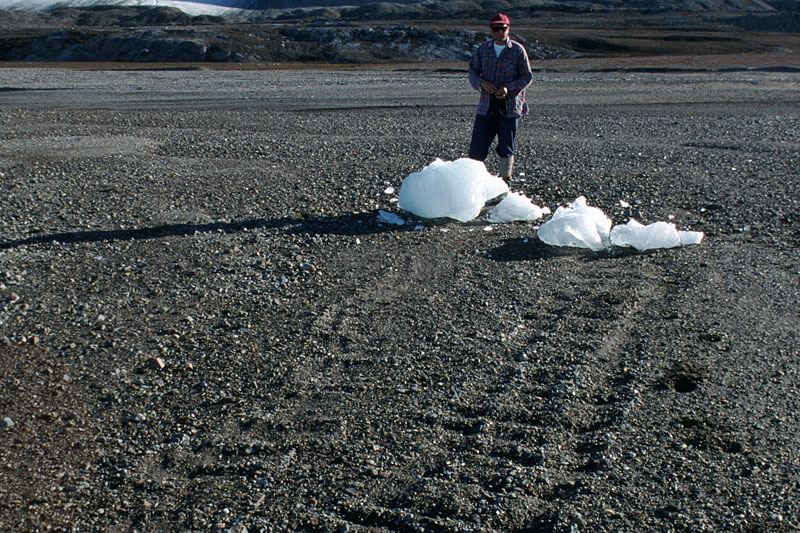 As small icebergs called bergy bits are jostled by the tide near beaches, they create juddermarks on the soft sediment. These marks, resembling the trace of a tracked vehicle, are shown with the culprits, now stranded at high-water mark, on this beach near Austre Lovenbreen in north-west Spitsbergen. | 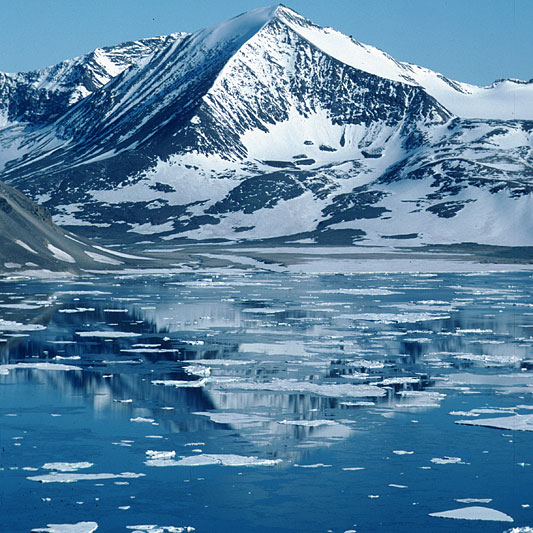 The outer coastal fringe of East Greenland retains ice floes even in late summer. This scene, showing the mountains reflected in the calm waters between floes, is from an area known as Liverpool Land. | 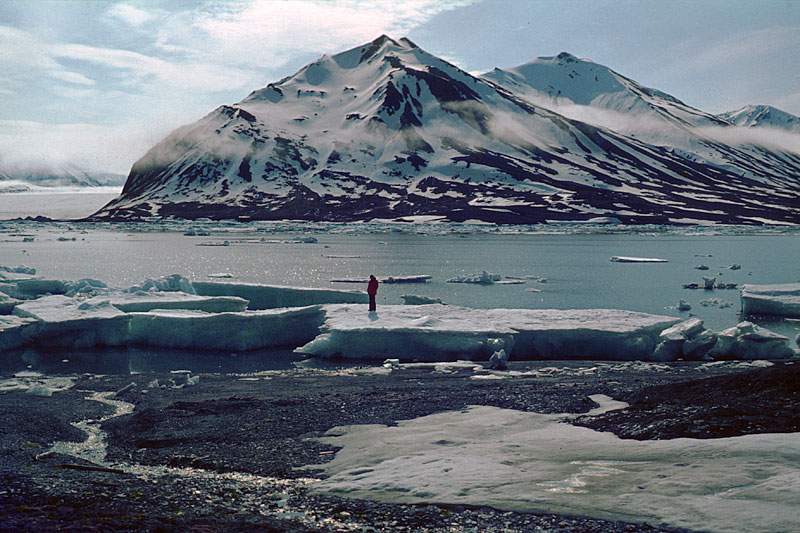 Polar pack ice occasionally drifts around the southern tip of Spitsbergen from the NE. After becoming caught up in the north-flowing current, the floes sometimes are driven into the southern fjords, hindering shipping. Here large floes are stranded at low tide in Bellsund. | 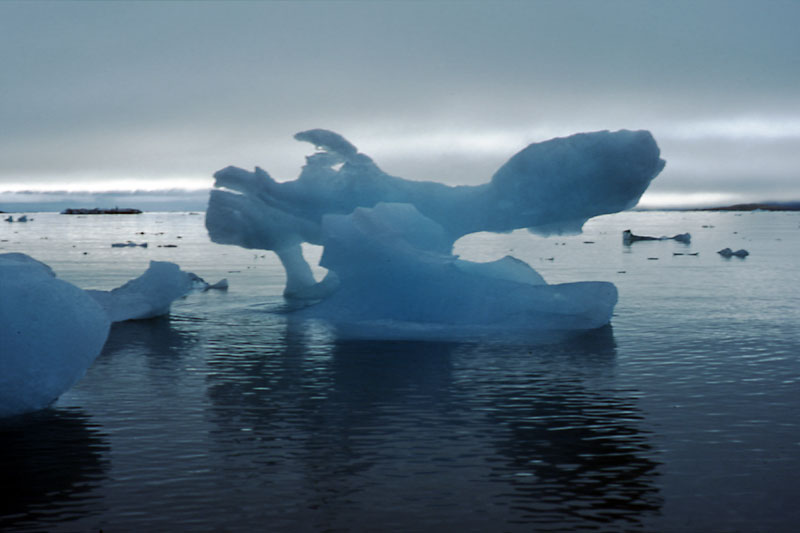 As the large ice floes from the polar pack disintegrate and become stranded at low tide, they take on a variety of elegant forms, as here in Van Keulenfjorden, western Spitsbergen. |
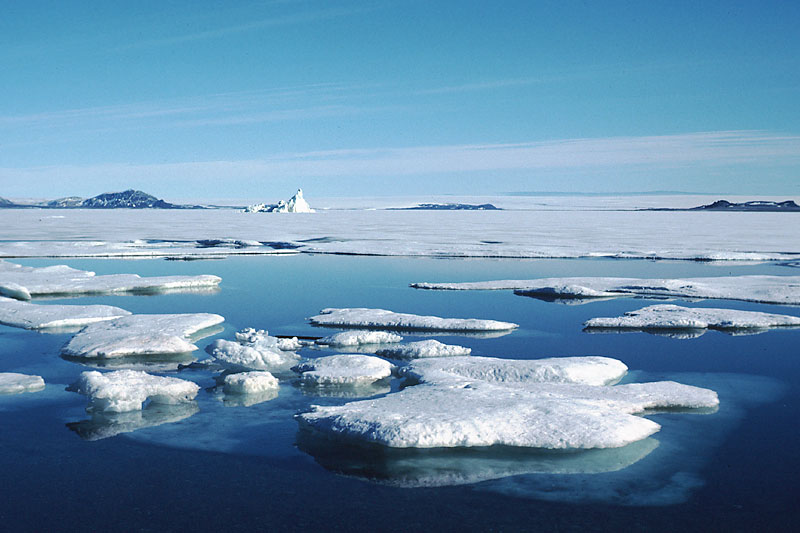 Floes formed in the Arctic Ocean are much larger than those formed in fjords, and are thus readily distinguishable. Here, a few large flows, with their underwater keels just showing through the clear water, are floating through the straight known as Hinlopenstretet, with Nordaustlandet, northeast Svalbard, in the background. | | | |